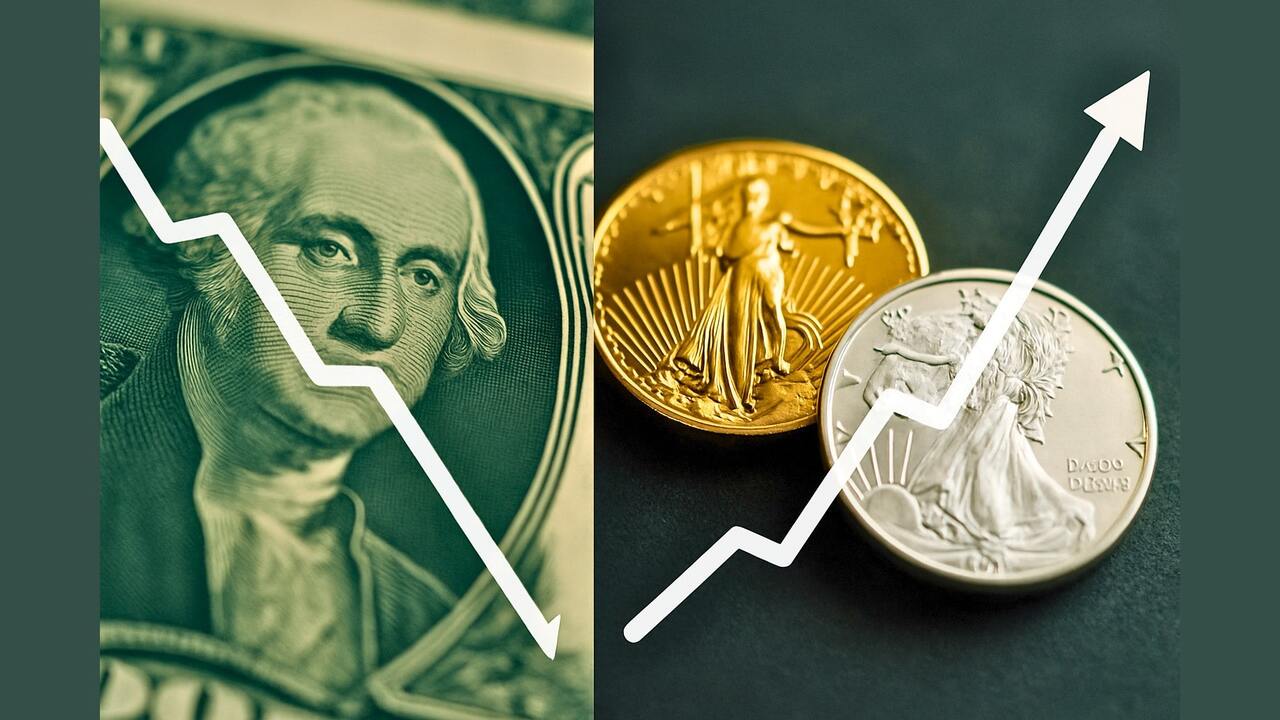(Jesse Colombo, Money Metals News Service) The U.S. dollar is undergoing a major technical breakdown—a highly bullish development for commodities, especially precious metals and their mining stocks.
For the past couple of months, I’ve been warning of a likely breakdown in the U.S. dollar—an event that historically signals a bullish turn for precious metals due to their well-established inverse relationship (read my recent report to learn more).
That breakdown is now unfolding, as I had anticipated, and gold, silver, and mining stocks are responding favorably. In this update, I’ll break down where these assets currently stand from a technical perspective and what’s likely to come next.
In my recent dollar updates, I emphasized the importance of the 100 level on the U.S. Dollar Index—a key support that had triggered several major rallies in recent years. But that support was recently broken, shifting my bias firmly bearish. In my latest analysis, I also pointed out the 98 level as the next important support and warned that a break below it would confirm a deeper selloff. Sure enough, the index sliced through that level today, hitting a three-year low and further reinforcing the downtrend.
The U.S. dollar has weakened over the past two days, driven by several key developments. Yesterday’s benign Consumer Price Index (CPI) report was followed by a soft Producer Price Index (PPI) reading today, reinforcing the disinflationary trend.
Adding to the pressure, a new report yesterday showed that U.S. continuing jobless claims have risen to their highest level in over three years. Together, these data points increase the likelihood of upcoming interest rate cuts—further weighing on the dollar’s outlook.
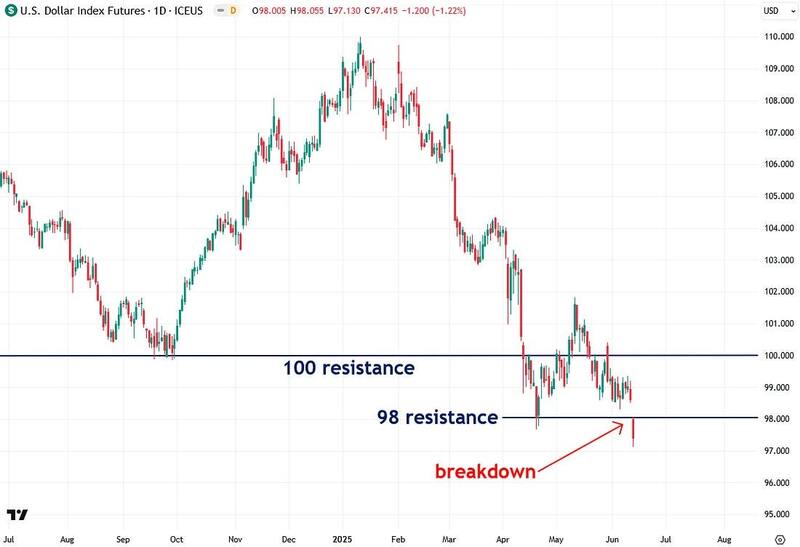
The weekly chart of the U.S. Dollar Index highlights how the 100 level has served as critical support for several years, with multiple rebounds occurring off of it. However, the recent decisive break below that level has given an important bearish signal. With that breakdown now validated, the next major support lies near the 90 level—which is now my next downside target.
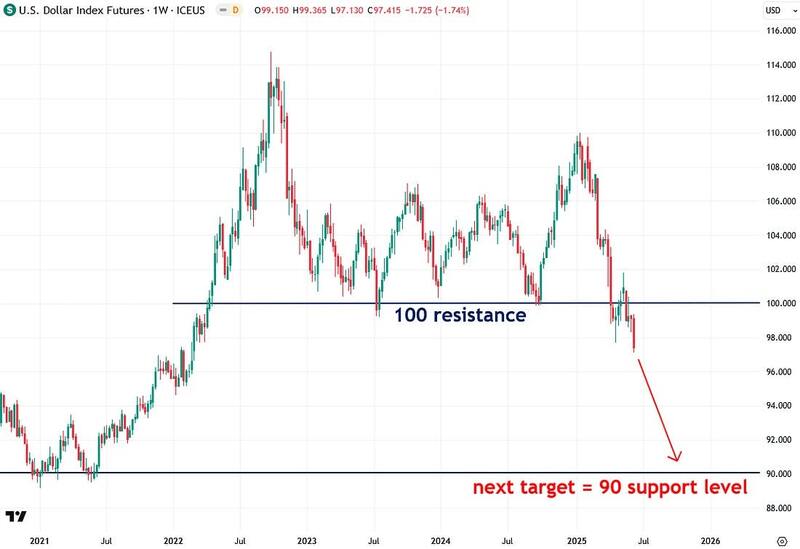
Zooming out to the long-term monthly chart of the U.S. Dollar Index reveals that it has been trading within a rising channel for nearly two decades. A continued move toward the key 90 level would mark a decisive breakdown from that pattern—one that is likely to open the door to even deeper declines.
There are numerous fundamental reasons to remain bearish, including the dollar’s extreme overvaluation relative to historical norms. A sustained dollar bear market would be like rocket fuel for commodities, especially precious metals and mining stocks. As a reminder, the early 2000s commodities bull market was fueled, in large part, by a prolonged dollar bear market—and I see strong parallels between that period and the current environment.
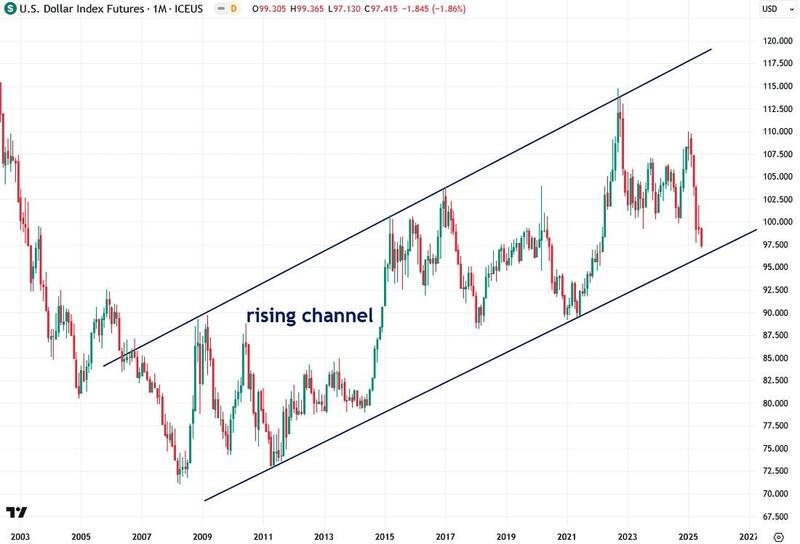
Next, let’s take a look at gold via COMEX futures, which I follow closely due to its tendency to trade in clean $100 increments—creating strong support and resistance around round numbers like $3,000, $3,100, $3,200, and so on.
Gold delivered a strong performance today, rising 1.76% on the back of soft inflation and jobs data, which pressured the U.S. dollar. Geopolitical tensions also contributed to the rally, with reports indicating that Israel may be weighing a strike on Iran’s nuclear facilities. This surge pushed gold futures up to the $3,400 level—but for a stronger bullish confirmation, I’d like to see a decisive breakout above that threshold in the days ahead.
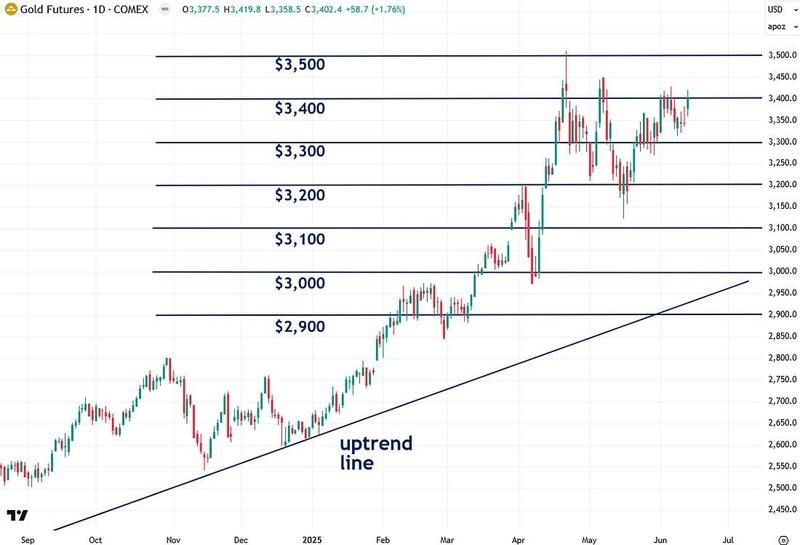
As I’ve been showing in recent updates, gold remains in a healthy consolidation range between $3,200 and $3,500, pausing to catch its breath after strong gains earlier this spring.
This sideways action may continue a bit longer, but a decisive breakout above $3,500 is the key signal I’m watching. That would likely mark the start of gold’s next major leg higher—likely targeting $4,000 next, given its significance as a major psychological milestone that tends to act like a magnet for price.
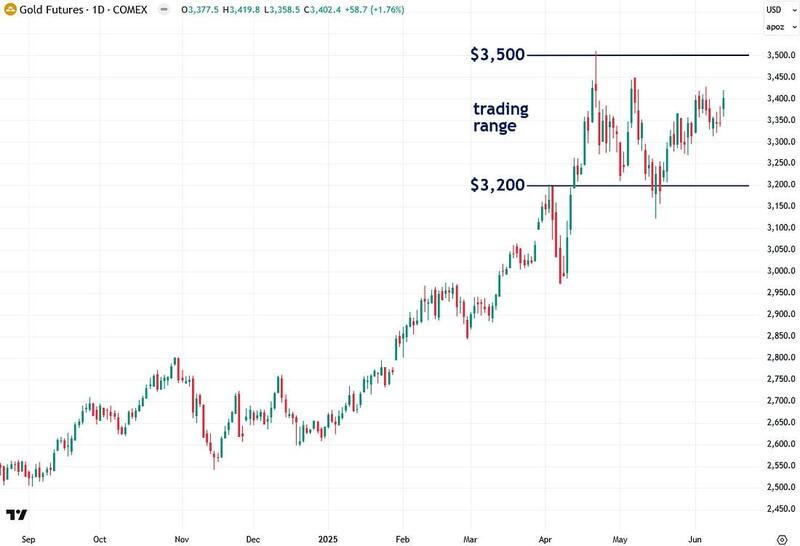
It’s also worth noting that gold had been forming a bull flag pattern over the past couple of months—and it recently broke out to the upside. This is a technically bullish development that reinforces the strength of the current move and warrants close attention.
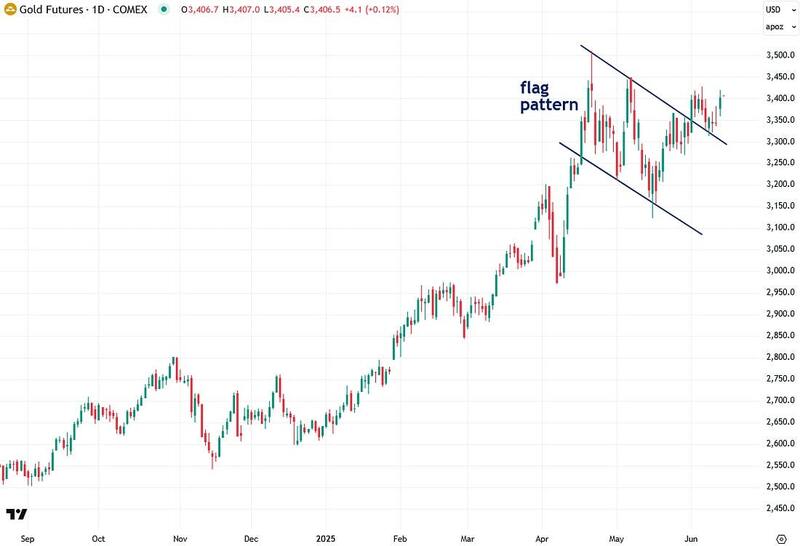
I’ve recently begun tracking gold priced in the World Currency Unit (WCU)—a composite currency based on the GDP-weighted average of the world’s 20 largest economies. In many ways, it offers one of the most balanced and accurate reflections of gold’s true global performance, which is why I’ve been paying close attention to it.
Gold priced in World Currency Units (WCUs) clearly demonstrates that its uptrend remains strong, with a well-defined trading range between 2,400 and 2,600 that’s important to watch closely:
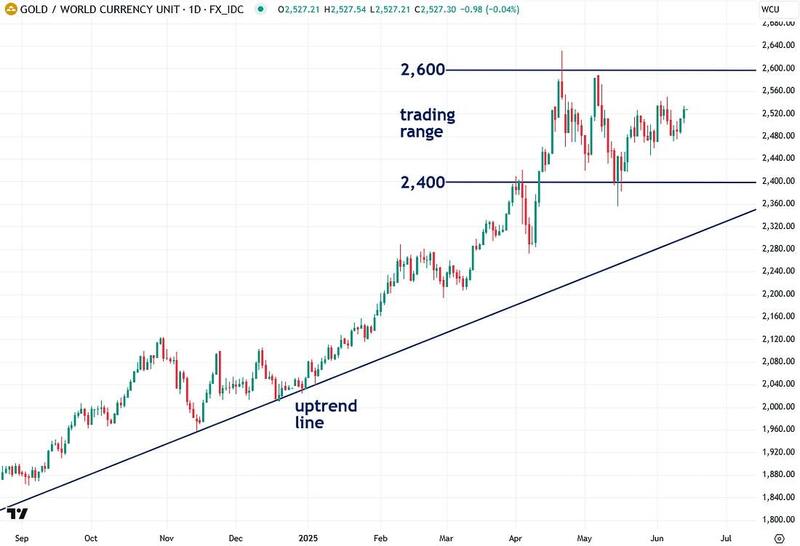
Silver has finally broken through its long-standing $34–$35 resistance zone—a strong signal that its bull market is gaining momentum after a year of frustrating false starts. Despite a few quiet days, the breakout remains intact. In my view, silver is simply consolidating before its next leg higher—first to $40, and eventually much higher.
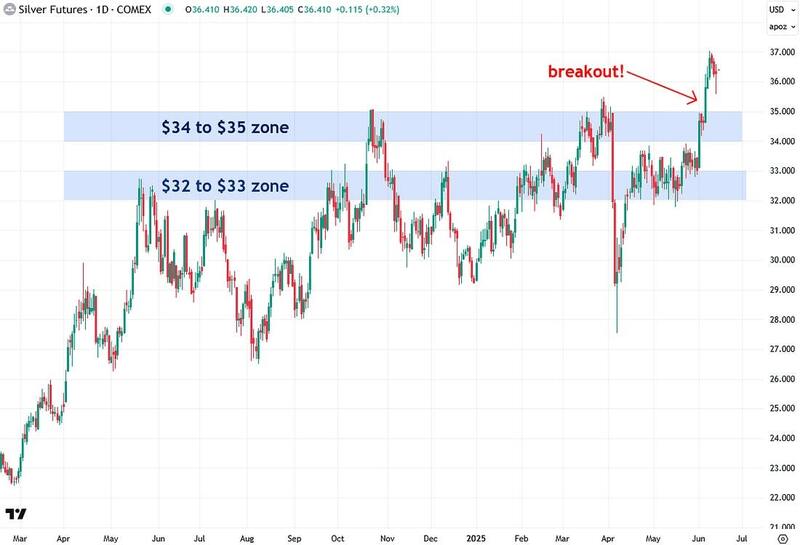
Next, let’s take a look at the Synthetic Silver Price Index (SSPI)—a proprietary indicator I developed to help validate silver’s price action and filter out potential false moves. The SSPI is calculated as the average of gold and copper prices, with copper scaled by a factor of 540 to prevent gold from dominating the index. Interestingly, even though silver isn’t part of the calculation, the SSPI closely tracks its movements. To learn more, check out the recent article I published.
The SSPI remains in a consolidation range between 2,800 and 3,000. A breakout above the 3,000 level would be a strong bullish confirmation for silver. Recent bullish action in both gold and copper pushed the SSPI right up to that 3,000 mark—an encouraging sign—but I’m waiting for a decisive close above it to confirm the breakout. I’ll be watching this development closely and will keep you all updated as it unfolds.
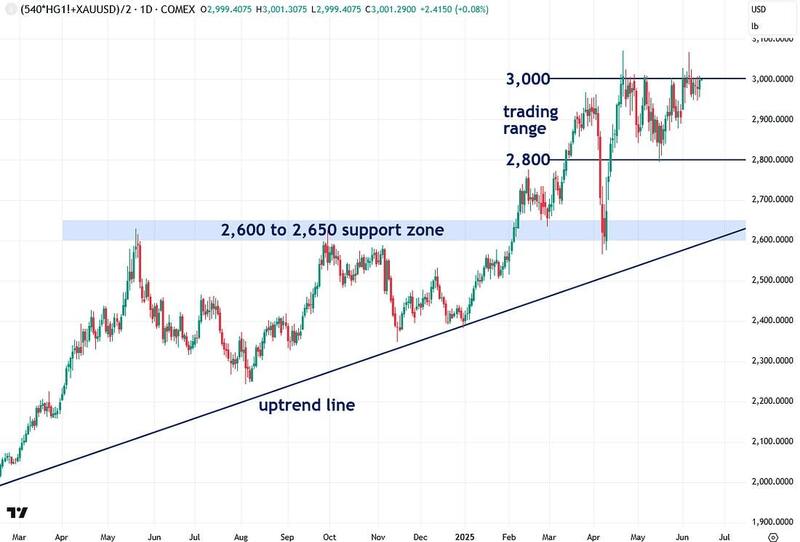
I also like to examine the underlying components of the SSPI to get a clearer sense of what’s happening beneath the surface. Since we’ve already covered gold, let’s now take a quick look at copper.
Copper is just under a major resistance zone between $5.00 and $5.20. A breakout above that zone would likely mark the start of a new copper bull market—one that would lift the SSPI and, by extension, silver as well. That’s because algorithmic trading systems arbitrage price relationships across metals, often causing their movements to align.

Next, let’s look at gold mining stocks, as tracked by the popular large-cap VanEck Gold Miners ETF (GDX). Notably, GDX recently broke above the $42–$46 resistance zone I’ve been highlighting—a strong signal that gold miners are finally coming to life.
After years of being deeply undervalued, mining stocks are finally starting to attract attention and get bought up. I’m increasingly optimistic about the sector and will be writing more soon now that I have a much clearer read on their trajectory.
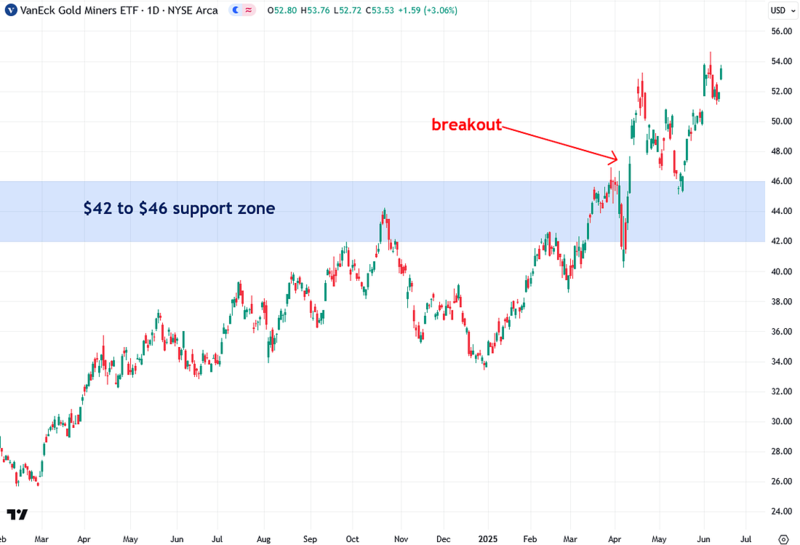
Silver miners, tracked by the SIL ETF, are also performing strongly and have entered the key $48–$52 resistance zone. A decisive breakout above this zone would provide further bullish confirmation—especially as silver’s momentum continues to build following its recent breakout.
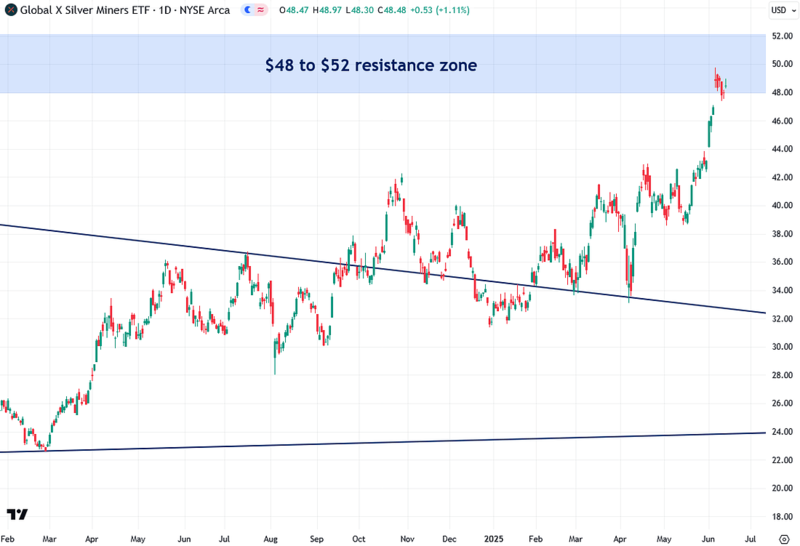
To summarize, the U.S. dollar is undergoing a major technical breakdown, driven by signs of easing inflation and a weakening job market. Given the long-established inverse relationship between the dollar and commodities—especially precious metals—this breakdown is likely to serve as a powerful tailwind for gold, silver, and their mining stocks.
It’s an exciting and pivotal moment for the precious metals space, and I’m glad to have you on this journey with me. Stay tuned for more updates ahead!
If you found this report valuable, click here to subscribe to The Bubble Bubble Report for more content like it.
Jesse Colombo is a financial analyst and investor writing on macro-economics and precious metals markets. Recognized by The Times of London, he has built a reputation for warning about economic bubbles and future financial crises. An advocate for free markets and sound money, Colombo was also named one of LinkedIn’s Top Voices in Economy & Finance. His Substack can be accessed here.

